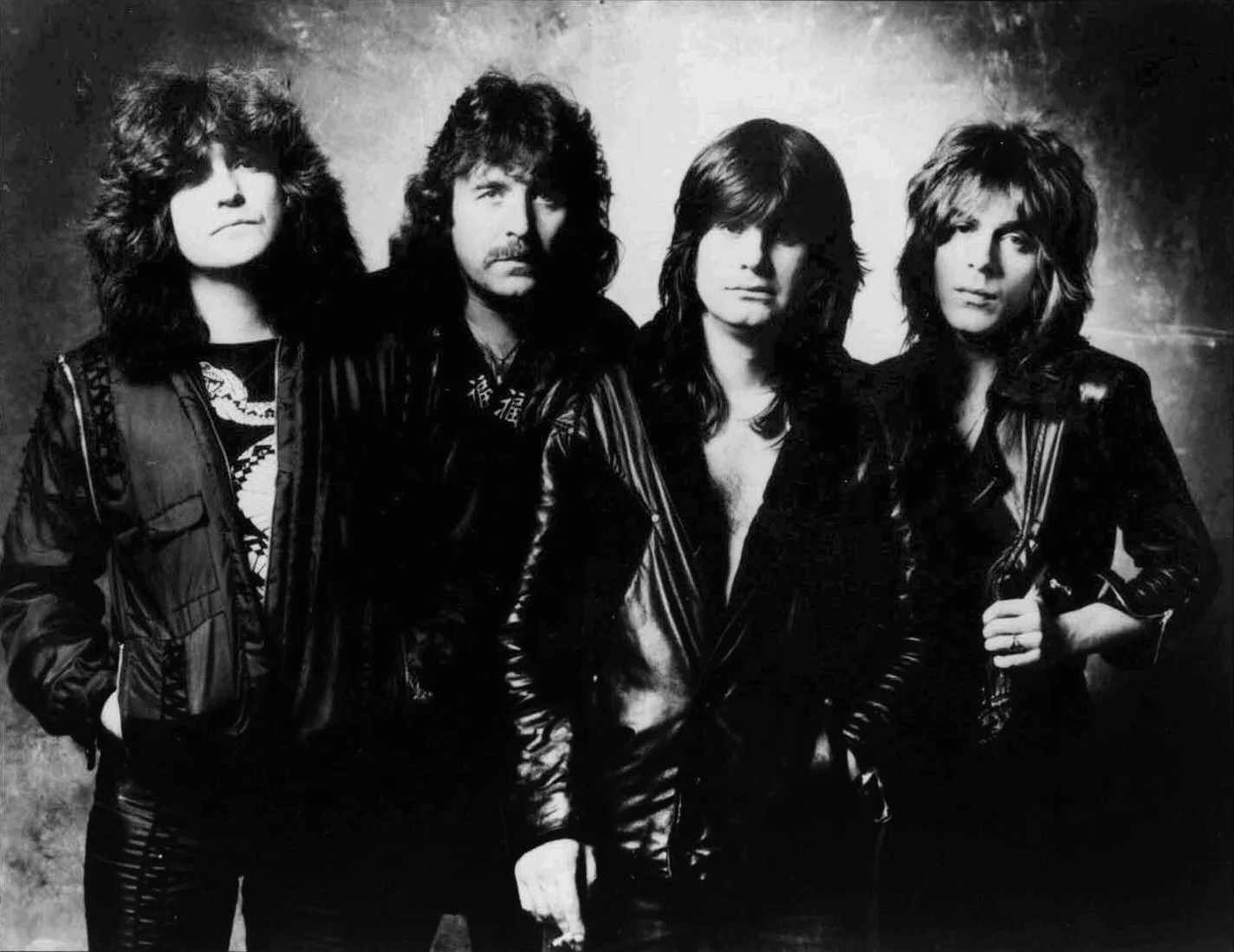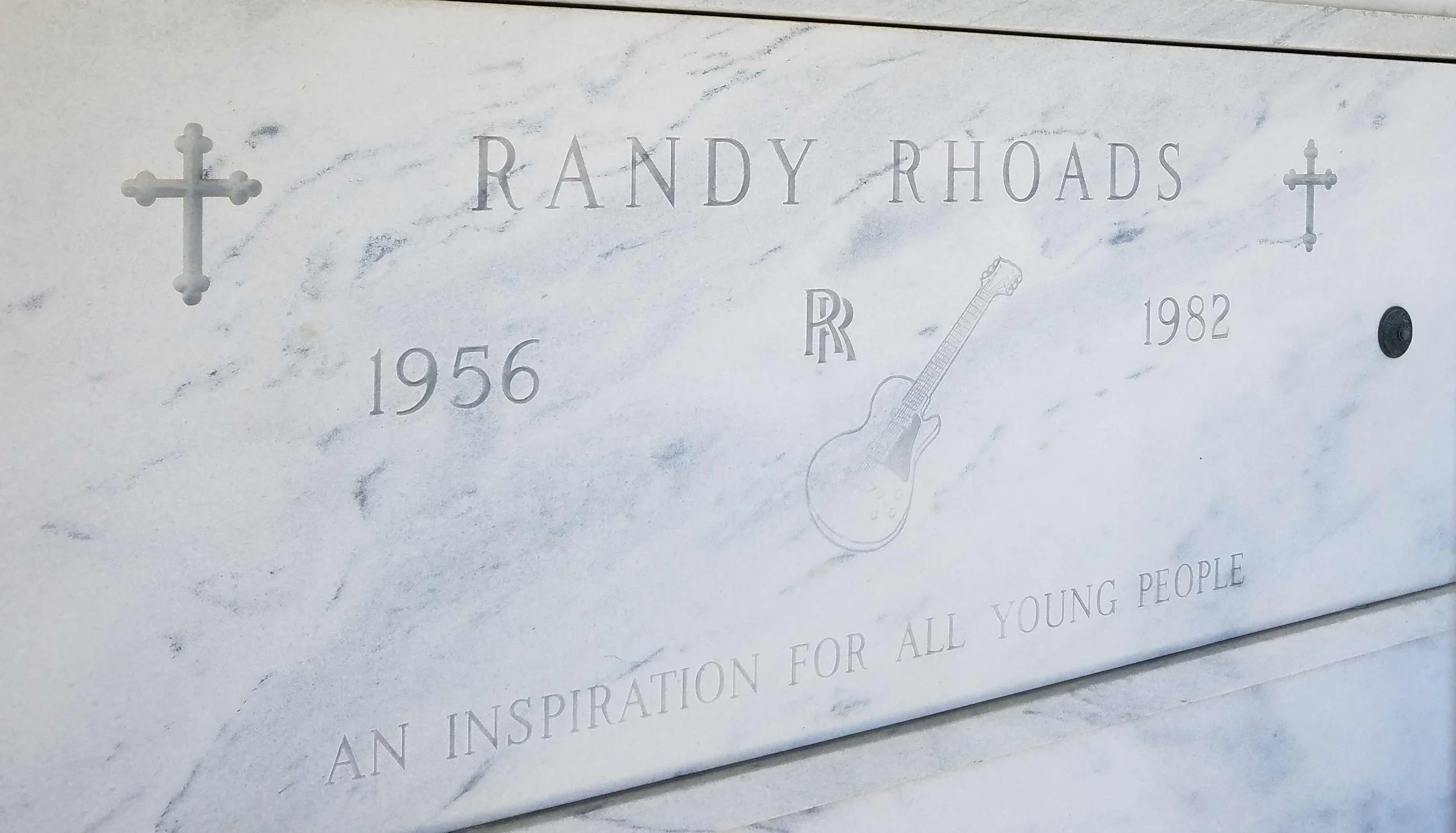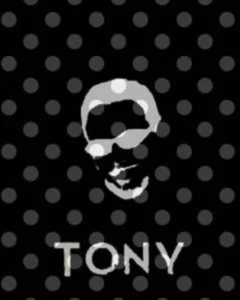Metal Reigns Supreme!
Celebrating the album Metal Health by Quiet Riot…
This breakthrough album reached the top of the Billboard 200 chart for the week of November 26, 1983.
This is an image of the cover art for the album Metal Health by Quiet Riot. The cover art copyright is believed to belong to the record label Pasha or the graphic artist(s).
Metal Health was the first Heavy Metal album to reach number one on the Billboard 200 chart.
It replaced the Police’s Synchronicity at number one. The album was released on March 11 of that year and took 32 weeks to reach the top of the charts. Metal Health, along with Motley Crue’s Shout At The Devil and Bark At The Moon by Ozzy Osbourne, blared from our radios and tape decks during the latter part of ‘83.
Well, I'm an axe grinder
Piledriver
Mama says that I never, never mind her
Got no brains
I'm insane
The teacher says that I'm one big pain
I'm like a laser
Six-string razor
I got a mouth like an alligator
I want it louder
More power
I'm gonna rock it till it strikes the hour
Lyrics from “Bang Your Head (Metal Health)” by Quiet Riot
Due to its commercial success, Metal Health is regarded by some as the catalyst that opened the door for hair metal’s immense popularity throughout the next several years. The album went on to sell more than ten million copies worldwide.
Source: Wikipedia.org
Metal Health and the resurrection of Quiet Riot
Formed in 1973 by guitarist Randy Rhoads and bassist Kelly Garni, Quiet Riot became one of the more successful hard rock acts in Los Angeles in the mid-to-late 1970s. The original lineup featured Rhoads and Garni with lead vocalist Kevin DuBrow and drummer Drew Forsyth. Rhoads became the focal point of the band, both musically and visually. The "polka-dot theme" he incorporated onstage became Quiet Riot's visual signature during their time on the L.A. club circuit, with many fans showing up at the band's shows wearing polka-dot bow-ties and vests in emulation of what the guitarist wore on stage. Due to their contract with Sony, Quiet Riot's first two albums were released only in Japan, albums that to this day have never been released in the United States.
As their second album was being recorded, the relationship between Garni and DuBrow finally reached its breaking point. After robbing a bar the previous night and stealing liquor, a drunken Garni unsuccessfully attempted to convince Rhoads to replace the vocalist. Garni drunkenly fired a handgun through the ceiling and a fistfight between him and Rhoads ensued. Garni then hatched a plan to drive across town to the Record Plant and kill DuBrow, who was there recording vocals for Quiet Riot II. Garni was arrested for drunk driving before he reached the studio, and the plan to kill his bandmate waned after he sobered up. Nonetheless, Garni's time in Quiet Riot came to a swift end. He was replaced by bassist Rudy Sarzo.
By 1979, Rhoads began to tire of the turmoil within Quiet Riot as well as their failure to sign a U.S. recording deal. Late that year he auditioned for and ultimately joined Ozzy Osbourne's new band. Rudy Sarzo followed soon after. Quiet Riot ended with the departure of Rhoads and Sarzo. However, the band was later resurrected by DuBrow and began to work on a new album. Quiet Riot parted ways with bassist Chuck Wright early in the recording process, and replacement Gary Van Dyke was not working out. Vocalist Kevin DuBrow asked former bassist Rudy Sarzo to take part in the recording of "Thunderbird", written as a tribute to the band's founder Randy Rhoads, who died in a 1982 plane crash. While DuBrow began writing the song while Rhoads was still alive, it wasn't completed until after the guitarist's death. The partnership was quite fruitful and Sarzo ended up recording several songs with the band, and he ultimately left his spot with Ozzy Osbourne to re-join Quiet Riot as a permanent member.
Coming so soon after Rhoads' death, there was some question over the appropriateness of the new band using the “Quiet Riot” name. Rhoads' mother Delores encouraged the band, and in the end it was decided that "although Randy wouldn't be in it, the original spirit of the band was back," according to Sarzo.
In support of the album, Quiet Riot toured North America as the opening act for ZZ Top on their Eliminator Tour for selected dates in June, July, and September 1983 and opened for Black Sabbath on their Born Again tour in the U.S. They also managed to secure a spot on the 1983 US Festival alongside established acts such as Ozzy Osbourne and Judas Priest. Prior to Quiet Riot's US Festival performance, Rudy Sarzo was punched in the face backstage by a drunken Osbourne, still bitter over the bassist leaving him to rejoin Quiet Riot several months prior.
Source: Wikipedia.org
As a guitarist, I am drawn to Carlos Cavazo’s solo “Battle Axe”. Carlos’ playing, tone, and the piece itself, were reminiscent of the late, legendary Randy Rhoads, especially his use of the toggle switch and the chunky, overdriven arpeggiated chords that begin at around the 53-second mark. Like Randy, Carlos even used a Jackson “Flying V” model guitar when he played the riff in a 1984 “Star Licks” instructional video.
Sadly, Kevin DuBrow passed away in November 2007. I was fortunate to see Quiet Riot in concert a couple of months before his passing, as they once again joined ZZ Top to celebrate the 33rd birthday of one of our city’s all-time greatest radio stations, KY-102 (KYYS). Drummer Frankie Banali died in August of 2020, following a battle with pancreatic cancer. His widow Regina wrote, “He put up an inspiringly brave and courageous 16-month battle to the end and continued playing live as long as he could. He lived for playing live and performed for millions of fans around the world throughout his career. His wish for everyone is that you be your own health advocate for early detection so you may live long and rescue many animals.” Requiescat in pace (Rest in peace).
Along with the late Eddie Van Halen and the legendary Steve Vai, Randy Rhoads will always be part of my “guitar virtuoso triumvirate”; a primary influence.
Originally educated in classical guitar, Randy Rhoads combined these early influences with Heavy Metal, helping form a sub-genre later known as Neoclassical Metal. With Quiet Riot, he adopted a black-and-white polka-dot theme which became an emblem for the group. He reached his peak as the guitarist for Ozzy Osbourne's solo career, performing on tracks including "Crazy Train" and "Mr. Crowley" on the Blizzard of Ozz album. "Crazy Train" features one of the most well-known heavy metal guitar riffs.
Source: Wikipedia.org
Randy’s early life and education
Randy Rhoads was born on December 6, 1956, in Santa Monica, California, the youngest of three children. His parents were both music teachers. His brother was also a musician, who performed under the name "Kelle." In 1958, when Rhoads was 17 months old, his father left the family and remarried. All three children were subsequently raised by their mother, Delores. She had received a bachelor's degree in music from UCLA and had played piano professionally. She opened a music school in North Hollywood called Musonia to support the family.
The Rhoads family did not own a stereo, and the children created their own music at home to entertain themselves. Randy listened to the Beatles and the Rolling Stones as a child and would imitate their performances with his brother Kelle in the family garage. Randy began folk and classical guitar lessons at approximately age seven at his mother's music school. He became interested in rock guitar and began lessons at Musonia from Scott Shelly. Shelly soon approached Rhoads' mother to inform her that he could no longer teach her son, as Rhoads' knowledge of the electric guitar had exceeded his own. Randy also received piano lessons from his mother to help build his understanding of music theory.
Randy met future bandmate Kelly Garni while attending John Muir Middle School in Burbank, California, and the two became best friends. The pair performed for a short time in a backing band for a vocalist remembered only as Smokey before forming a cover band, Violet Fox, with Rhoads' older brother Kelle on drums. Violet Fox, which was together for approximately five months, staged several performances in the Grand Salon at Musonia. Among their setlist was "Mississippi Queen" by Mountain and songs from the Rolling Stones, Alice Cooper, and David Bowie.
Source: Wikipedia.org
“Next up was the main riff to “Iron Man” by Black Sabbath (although at the time, I was listening to the Randy Rhoads’ version from the Tribute album by Ozzy Osbourne). It was happening...”
- Woodard, Anthony. “For Those About to Rock…”. Feb. 16, 2023
The power of live music…
Live bootleg recordings were very popular at that time (early-1970s), and Randy began to take note of the differences between studio recordings and the live versions, particularly the different licks guitarists incorporated when playing live. He began to memorize these licks and taught himself to play them. Randy's brother states that a July 11, 1971, Alice Cooper concert at the Long Beach Auditorium that the pair attended was a defining point in the guitarist's life. After the concert was over he noted: “Randy was mesmerized. He was catatonic, just staring at the stage. Later that night Randy said 'I can do this. I can look like this. I can be this.' Something clicked that night and I think that kind of showed him what he could do with his talent.”
Source: Wikipedia.org
“I became hooked after experiencing my first two Rock concerts in the Summer of 1993. I soon realized two things; (1) I really had to learn how to play the guitar and (2) I preferred live performances over studio recordings. And so, about two months later, I arrived at my local music store with $500 and a plan…”
- Woodard, Anthony. “Rockstar” Q&A with Tony Woodard… Sep. 30, 2023
Ozzy Osbourne band in 1980, then known as "Blizzard of Ozz".
L-R: Bob Daisley, Lee Kerslake, Ozzy Osbourne, Randy Rhoads
Photo Credit: Jet Records, Public domain, via Wikimedia Commons
A major influence.
Tragically, Randy died in a plane crash while on tour with Ozzy Osbourne in Florida in 1982. Despite his short career, Randy is regarded as a pivotal figure in Metal music, credited with pioneering a fast and technical style of guitar soloing that largely defined the metal scene of the 1980s. He helped popularize various guitar techniques now common in Heavy Metal music, including two-handed tapping, vibrato bar dive bombs, and intricate scale patterns, drawing comparisons to his contemporary Eddie Van Halen. The Jackson Rhoads guitar was originally commissioned by him. He has been included in several published "Greatest Guitarist" lists, and has been cited by other prominent guitarists as a major influence.
Source: Wikipedia.org
Photo Credit: Jimmypage123456, CC BY-SA 4.0, via Wikimedia Commons
RR Forever!



